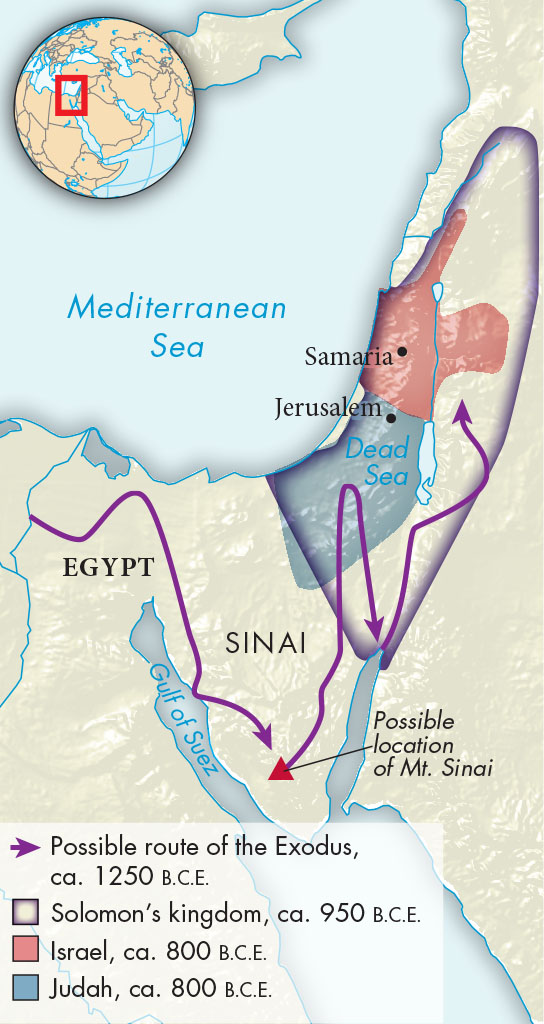A History of World Societies:
Printed Page 52
A History of World Societies Value
Edition: Printed Page 49
The Hebrew State
Most of the information about the Hebrews comes from the Bible, which, like all ancient documents, must be used with care as a historical source. Archaeological evidence has supported many of its details, and because it records a living religious tradition, extensive textual and physical research into everything it records continues, with enormous controversies among scholars about how to interpret findings.

The Hebrews were nomadic pastoralists who may have migrated into the Nile Delta from the east seeking good land for their herds of sheep and goats. According to the Hebrew Bible, they were enslaved by the Egyptians but were led out of Egypt by a charismatic leader named Moses. The Hebrews settled in the area between the Mediterranean and the Jordan River known as Canaan and were organized into tribes, each tribe consisting of numerous families who thought of themselves as related to one another. They slowly adopted agriculture and, not surprisingly, at times worshipped the agricultural gods of their neighbors, including Baal, an ancient fertility god represented as a golden calf. In this they followed the common historical pattern of newcomers by adapting the culture of an older, well-
The Bible reports that the greatest danger to the Hebrews came from a group known as the Philistines (FIH-
This state did not last long. At Solomon’s death his kingdom broke into political halves. The northern part became Israel, with its capital at Samaria, and the southern half was Judah, with Jerusalem remaining its center. War broke out between the northern and southern halves, and the Assyrians wiped out the northern kingdom in 722 B.C.E. Judah survived numerous invasions until the Babylonians crushed it in 587 B.C.E. The survivors were sent into exile in Babylonia, a period commonly known as the Babylonian Captivity. In 538 B.C.E. the Persian king Cyrus the Great conquered the Babylonians and permitted some forty thousand exiles to return to Jerusalem (see “The Rise and Expansion of the Persian Empire” and “Viewpoints 2.2: Rulers and Divine Favor: Cyrus the Great in the Cyrus Cylinder and Hebrew Scripture”). They rebuilt the temple, although politically the area was simply part of the Persian Empire.